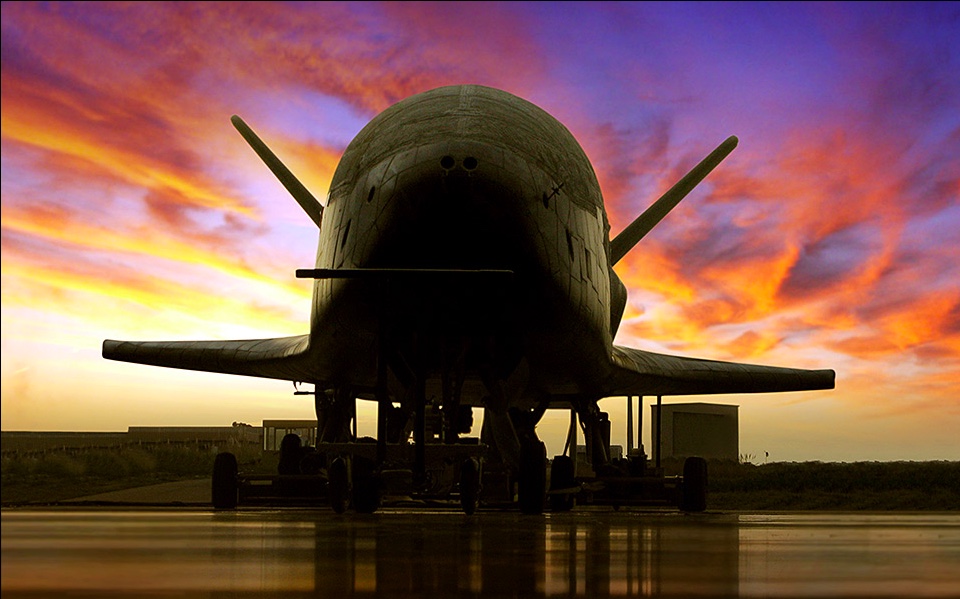How a Guy in the Netherlands Spotted the Top Secret X-37B Space Plane

A skywatcher in the Netherlands was lucky enough to be in the right place at the right time to see the U.S. Air Force's supersecret X-37B space plane on April 11, or that's the likeliest identity of the bright moving spot in the sky anyway.
The launch itself wasn't a secret: The robotic craft, made by Boeing, took off on its fifth mission on Sept. 7, 2017, atop a SpaceX Falcon 9 rocket that launched from NASA's Kennedy Space Center in Cape Canaveral, Florida, according to a SpaceX statement.
Cees Bassa didn't know at first that he'd spotted the spy craft, which looks like a mini space shuttle when seen up close. But he was intrigued enough to estimate that the object's circular orbit was inclined by about 54.5 degrees and had an altitude of 220 miles (355 kilometers) above Earth. With those estimates, he realized the flying object could be the fifth mission of the X-37B, also called the Orbital Test Vehicle (OTV-5 for the fifth mission), writes Leonard David, the Space Insider columnist for Live Science's sister site Space.com. [The X-37B's Fourth Mystery Mission in Photos]
A similar sighting was reported by Russell Eberst in Edinburgh, Scotland, in October 2017, according to Leonard.
Here's why the space community thinks the culprit was the X-37B.
"I found, with very slight tweaks, the preliminary orbit that Cees had posted could be made to fit both his and Russell's observations," Ted Molczan, a satellite analyst in Toronto, told Inside Outer Space, David's blog.
Furthermore, the orbit passes within 2 degrees longitude of Cape Canaveral at the time of the launch, making the X-37B a plausible identification.
Get the world’s most fascinating discoveries delivered straight to your inbox.
Also, the Air Force had noted this current OTV mission would have the highest inclination to date; until now, the greatest inclination reached for the X-37B was 43.5 degrees on the third mission, according to spaceflight101.com, so 54 degrees would clearly be higher. (An orbital inclination is the angle between the craft's orbital plane and that of Earth's equator.)
"Cees recovered the object, which can now be identified beyond reasonable doubt as OTV-5," Molczan said, using the word "recovered" to indicate that's what Cees had spotted. [Flying Saucers to Mind Control: 22 Declassified Military & CIA Secrets]
What the X-37B does during its classified missions orbiting Earth or what exactly it's carrying in its pickup-truck-size payload bay is anyone's guess. Since the first flight, on April 22, 2010, the X-37B has garnered a lot of press for its secret status.
Some have even speculated the X-37B could be some sort of space weapon. The more likely scenario is that the missions are testing out next-generation satellite technologies in space, Space.com has reported.
Overall, the four completed missions of the X-37B have clocked 2,085 days in orbit, with each successive mission breaking the previous "endurance" record. Nobody knows how long the current mission will remain in orbit.
Original article on Live Science.
Jeanna Bryner is managing editor of Scientific American. Previously she was editor in chief of Live Science and, prior to that, an editor at Scholastic's Science World magazine. Bryner has an English degree from Salisbury University, a master's degree in biogeochemistry and environmental sciences from the University of Maryland and a graduate science journalism degree from New York University. She has worked as a biologist in Florida, where she monitored wetlands and did field surveys for endangered species, including the gorgeous Florida Scrub Jay. She also received an ocean sciences journalism fellowship from the Woods Hole Oceanographic Institution. She is a firm believer that science is for everyone and that just about everything can be viewed through the lens of science.


